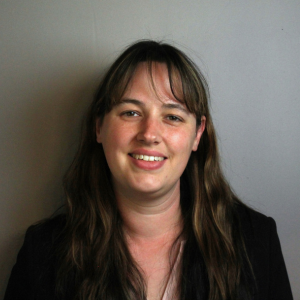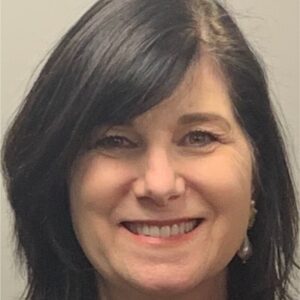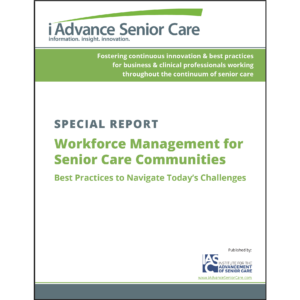Building a Better Hiring Experience: How to Create an Ideal Candidate Journey
Finding the right staff is crucial for senior care communities, and it all starts with a thoughtful hiring process. However, hiring isn’t just about selecting qualified candidates—it also shapes the broader experience for applicants. By designing an intentional and positive candidate journey, senior care organizations can unlock a range of benefits, from attracting top talent to building a strong workplace culture.
Why Crafting a Seamless Candidate Journey Matters

Jill McGroarty, vice president of human resources at Maplewood Senior Living
A well-designed hiring process enables senior care facilities to attract candidates who truly align with their mission and values. By crafting a thoughtful candidate journey, organizations can strengthen cultural alignment and improve long-term staff retention. “In industries like senior living, word spreads quickly, and a positive candidate experience enhances the organization’s reputation, making it easier to attract referrals,” says Jill McGroarty, vice president of human resources at Maplewood Senior Living.
A community’s reputation can bolster hiring and recruiting efforts, helping them find the talent they need. “Maplewood relies heavily on reviews from platforms like Glassdoor and Indeed to promote our organization as a top place to work, showcasing the positive experiences of our current employees and attracting top talent,” McGroarty says.
The candidate journey can also impact staff retention, which is particularly important given the industry’s staffing challenges, says Aaron Marcum, founder at Breakaway365. “After years of measuring job satisfaction for senior care professionals, I have found that much of the turnover in senior care happens in the first 90 days of employment,” he explains. “If you have a broken hiring process, a community will lose credibility on day one and their likelihood of staying past 90 days is small, costing thousands in turnover costs.”
Common Challenges and Solutions to the Hiring Process
From communication strategies to managing the hiring timeline, there are clear ways to overcome the common challenges that arise during the hiring process.
Attracting Candidates with the Right Skills

Lisa Santucci, senior manager of talent acquisition at Five Star Senior Living
Many employers struggle to attract candidates who have the right skill sets for the unique demands posed by roles in the senior care industry, says Lisa Santucci, senior manager of talent acquisition at Five Star Senior Living. She suggests that communities invest in targeted recruitment efforts, including partnerships with local training programs. Additionally, communities can create a supportive onboarding process that focuses on the specialized needs of senior care professionals. “Fostering an inclusive and empathetic workplace culture from the start can help retain talent in this challenging industry,” Santucci explains.
Setting Clear Timelines
A slow hiring process is a common pitfall, and in today’s competitive senior care market, it can cause communities to miss out on top-tier candidates. McGroarty recommends that senior care communities improve the hiring process by streamlining interviews, pre-employment steps, and onboarding.
It’s also important to set clear timelines and communicate those timelines to candidates. Moving quickly is particularly essential when hiring for high-demand roles like caregivers and nurses. “Platform integration between applicant tracking systems and third-party onboarding partners reporting regular updates on the pre-employment steps would serve to keep hiring managers in the loop, reducing time to fill,” says McGroarty.
Showcasing Community Culture
McGroarty notes that failing to showcase a community’s culture and purpose can also deter top talent. “In August 2024, Maplewood launched a Careers Instagram page to highlight our values, team culture, and on-the-job insights—helping candidates connect with our mission before they even apply,” she says.
Marcum goes a step further by emphasizing the importance of aligning each new hire’s role with their unique strengths, the organization’s core mission and values, and the candidate’s personal sense of purpose. “Too often we tell them our values but do not create alignment between ours, theirs, and their roles. If we did so, we would see far less turnover,” he says.
Navigating the Gap Between Offer Letters and Start Dates

Cynthia Primm, chief human resources officer at One Senior Care
Navigating the gap between when a community extends an offer letter and the candidate’s actual start date can be a challenge, too, says Cynthia Primm, chief human resources officer at One Senior Care. “This interim period is crucial, as candidates must complete essential regulatory and administrative requirements—such as the Office of the Inspector General (OIG) and criminal background checks, drug testing, and other necessary paperwork,” she says.
Clear and consistent communication is essential during this period to retain candidates. Once One Senior Care extends an offer, they maintain an ongoing dialogue with a candidate and provide regular updates and guidance to keep them engaged throughout every step of the onboarding process. Their applicant tracking system stores all notes about candidate communications, allowing hiring managers and other team members to access complete information during the hiring process.
Candidate Communication
Communication is one of the most critical yet frequently overlooked aspects of the candidate journey. When candidates don’t receive updates on their application status, they’re often left frustrated—and more likely to pursue other opportunities.
Automated systems help ensure all candidates receive regular updates. “We prioritize candidate communication from the very start by sending an automated confirmation email as soon as an application is received, setting the tone for a respectful and responsive hiring process,” says McGroarty.
Her organization’s applicant tracking system can track candidate status, flag unreviewed applications, and send timely updates to keep candidates up to date. The system also features built-in texting capabilities to make communication more personal and reduce the chance of missed messages. “We also set internal benchmarks to review applications within a specific timeframe, ensuring no candidate falls through the cracks,” McGroarty adds.
Maintaining strong communication throughout the hiring process is essential to keeping candidates engaged and informed. Once applications are received, the recruitment team reviews each one and ensures consistent follow-up with candidates at every stage, whether or not they advance in the process. “Our goal is to maintain transparency, respect, and open communication, ensuring every candidate feels valued, regardless of the outcome,” explains Santucci.
One Senior Care uses an automated messaging system that acknowledges applications and provides information on the next steps. Additionally, their human resources team works to ensure that all applications are promptly acknowledged. “If a candidate isn’t sent an appointment for an interview within a week of applying, our system notifies us so we can send an acknowledgment email to the candidate,” says Primm.
Next Steps: The Interview Process
In addition to the elements we touched on above, the interview process plays a pivotal role in shaping the candidate experience. In part two of this series, we’ll focus on how to design an effective interview process, incorporate staff feedback for continuous improvement, and track key metrics that drive better hiring outcomes.

Paige Cerulli is a contributing writer to i Advance Senior Care.
Related Articles
Topics: Executive Leadership , Featured Articles , Leadership , Operations , Staffing











